Overview
Imagine being able to organize your workflow visually by moving tasks, prospects, appointments, or proposals through stages just like a sales or project pipeline. That’s the concept behind TaskBoards.
TaskBoards allow you to group contacts, proposals, or appointments into columns representing stages in your process—like prospecting, follow-up tasks, or project milestones. As work is completed, you simply drag the card to the next column. Many brands call this a Pipeline or Sales Process. Regardless of what you call it, TaskBoards provide a visual and organized way for users to track work and stay on top of their tasks. It's flexible and can adapt to virtually any process or industry.
TaskBoards can be used manually or combined with system automations (Drip Triggers) for a more streamlined process. This is an add-on feature, so some functionality may require upgrading your account.
This article will review:
Video Tutorial
Watch this quick video to see how to create TaskBoards and manually move a Contact on or off the board.
Settings and Navigation
Navigate to Control Panel > TaskBoards to create or edit TaskBoards.
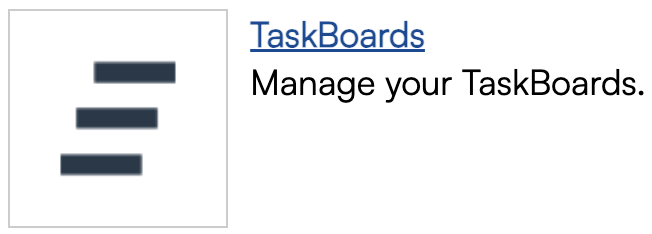
Or, use your Shortcuts in the left-hand navigation panel to view and work with your existing TaskBoards.

Card Features
- A colored box beside the card indicates the owner (if the owner has a service agent color assigned).
- A red left border signals overdue tasks for that contact.
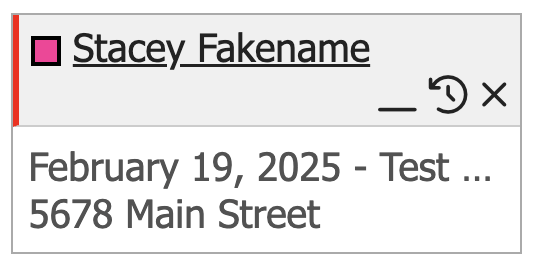
TaskBoard Controls
At the top of each TaskBoard, you'll find the following options:

- Line icon: Minimize or expand every card on the TaskBoard (icon will change to expanded square icon when all items are collapsed).
- Funnel icon: Filter the TaskBoard by owner.
- Download icon: Download the data from the TaskBoard into a CSV file.
- Card: Switch the TaskBoard to card view.
- Grid: Switch the TaskBoard to grid view.
Creating a TaskBoard
You can have as many TaskBoards as you want. You can create different boards for different purposes.
On the TaskBoard page, click the Add button.

Add a Name and determine what Kind of TaskBoard this will be. There are 3 options:
- Contact - Manage prospect funnels or long-term processes involving specific contacts.
- Proposal - Track proposal sales processes or manage projects tied to proposals.
- Appointment - Organize and track individual appointments through stages.
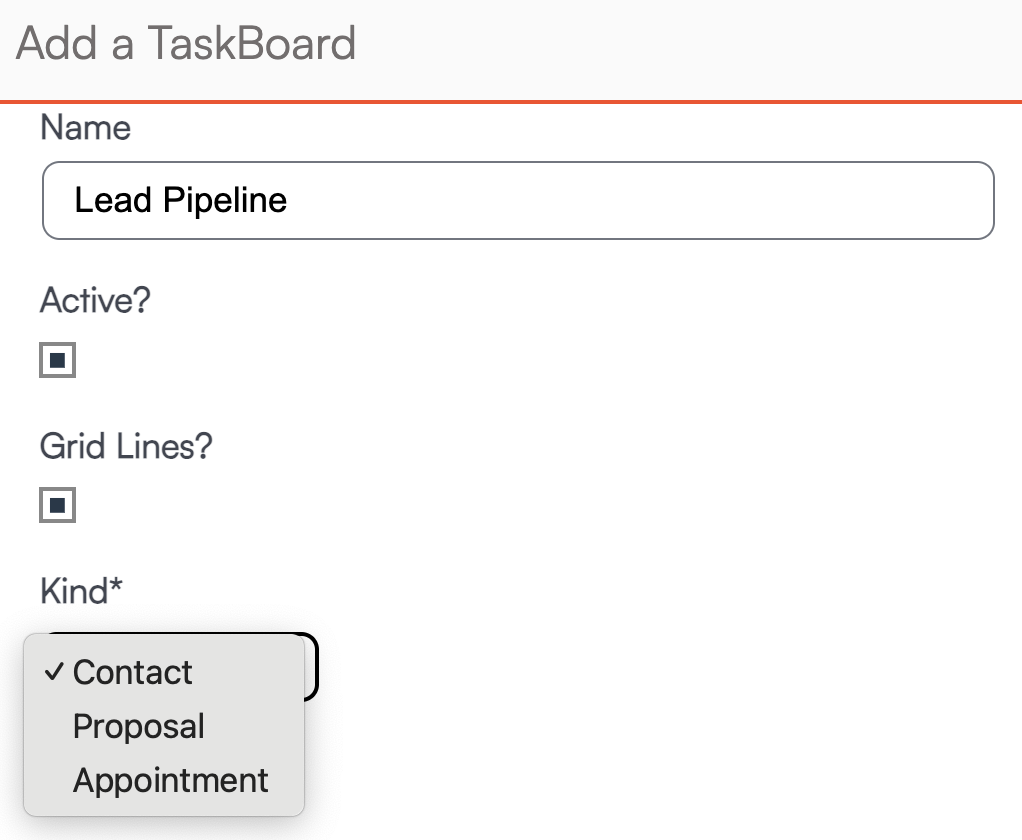
Appointment-Type TaskBoards are our newest type of TaskBoard focus on individual appointments, perfect for workflows that involve multiple visits tied to a single proposal. This means you can now track the progress of each appointment like site visits, contractor quotes, or material orders.
Appointment TaskBoards also support appointment-specific shortcodes and drip triggers, giving you more flexibility in how you automate and communicate.
TaskBoard Settings
Once you Save your Taskboard, you can click Edit next to your brand new TaskBoard and have the following configuration options.
Card Content
Each TaskBoard type displays relevant information on its cards:
Contact Boards: Show contact or organization info.
Proposal Boards: Display proposal details.
Appointment Boards: Pull appointment-specific data (service, date, agent, status, etc.).
Customize card content using Shortcodes and Markdown to include information like tags, owners, service details, and dates.
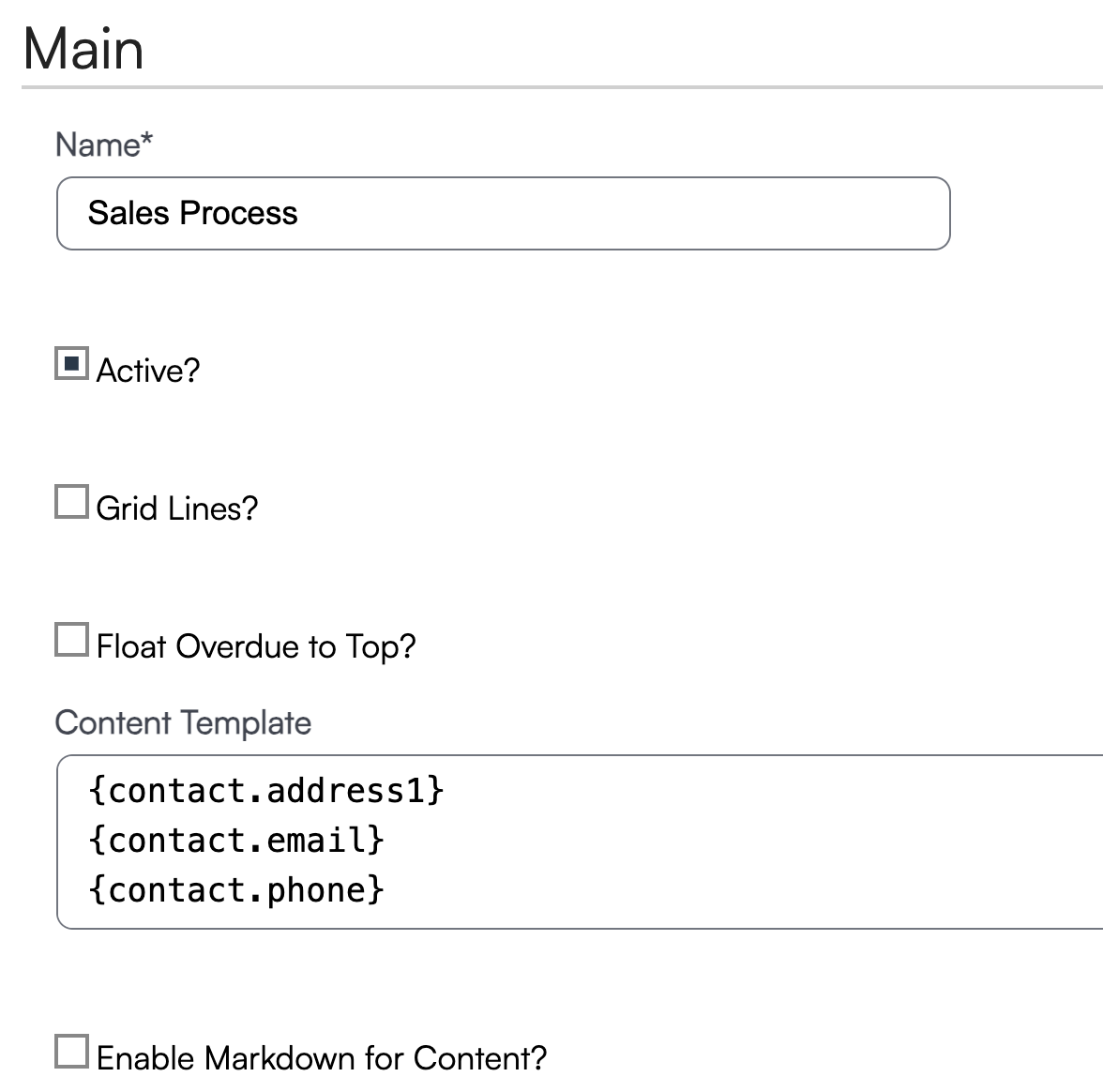
Access
The Access portion of the TaskBoard settings page determines who can view the TaskBoard and which cards they can see on it.

You must visit this page and check the box for your name under Access in order to see the TaskBoard appear in your Shortcuts menu.
If you check the Owner Limited box for a User, then it will limit what they can view on the TaskBoard:
- If this is a Contact or Appointment type TaskBoard, it will use the Contact Owner field. For instance, you have two sales people and they each own certain Contacts, they will only be able to see which contacts they own on the TaskBoard. This option requires you to enable Contact Ownership for your organization.
- If this is a Proposal type TaskBoard, it works the same way but pulls from the Proposal Owner field. So if you own a proposal for specific Contacts, then you will only see those contacts on the board. By default, each proposal will have an Owner, so there is no setting to turn on for this.
States (Columns/Swim Lanes)
Each column represents a stage in your process. Add as many as needed:
Name each state something that makes sense to your workflow.
You have the option to assign a color to each state for easier visualization.
Don't forget to click Save when done!
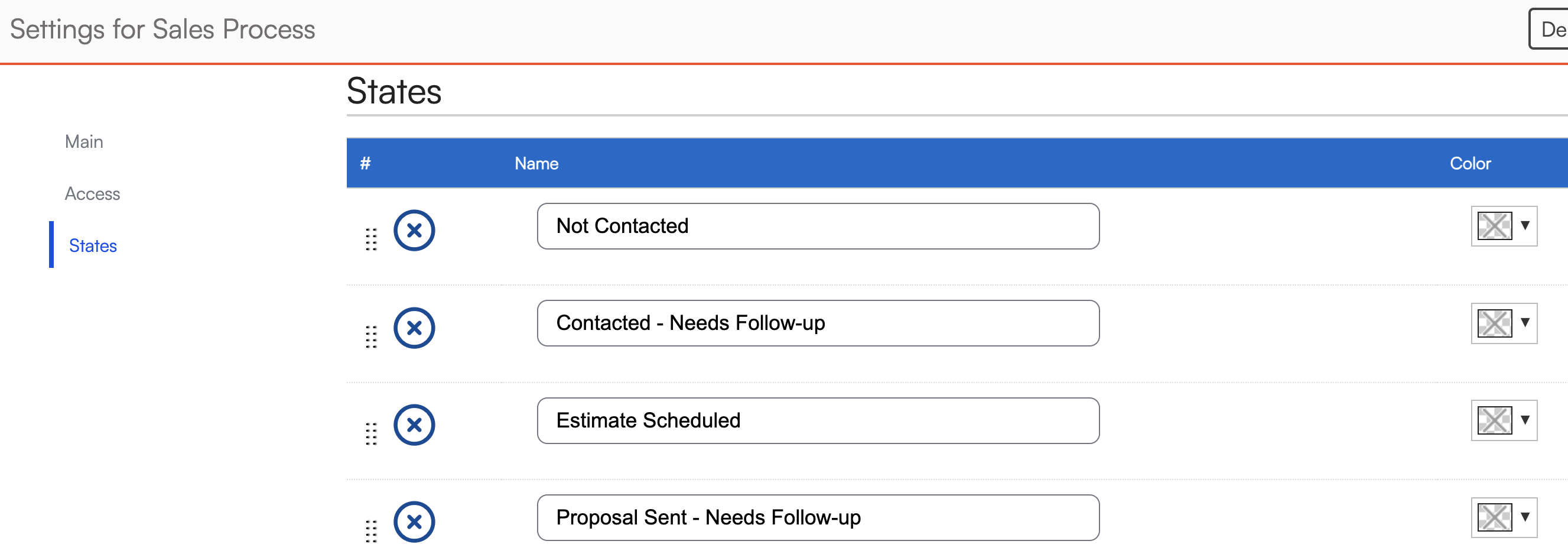
Using a TaskBoard
Adding Items to a TaskBoard
Click the link for the TaskBoard from Shortcuts.
Each column/state/swimlane has a "+" sign in the header.
Click that and a search box will open up above the TaskBoard. You can search for contacts by just starting to type the name of the contact you want to add.
Click the down arrow next to each matching name shown that you want to add. If the TaskBoard is for proposals, the list will show individual proposals for the contacts that match your search criteria.
When you're done searching and adding, just click the Done button.
Arranging Items on a Task Board
You can move items between columns/states/swimlanes by clicking on the item header and dragging and dropping it in the column you want. The order of items in the column are "sticky" so just drop it right where you want it to fit in. It will stay in that order. You can re-order within the same column the same way.
We record the time and user when an item is added to a column and when it's dragged out, as well as when it's removed from the board. New reporting will be available in an upcoming release that will show times and related events for these activities.
Of course, you can use Drip Triggers to have cards move automatically from status-to-status, as well as enter and leave a board.
Any contact cards which have tasks tied to them can become "overdue" - you will see that the card has a red border. When this happens, that contact card will always rise to the top of that state/swimlane in order of overdue date. Because of this, re-ordering other contacts cards above the overdue cards will not "stick" that re-order.
Removing A TaskBoard
You've got a couple of options. If you just don't want to see or use a particular task board any more, just click on Settings and remove it from all users. Organization administrators can access all the task boards through control panel, so even if it's not on your Shortcuts, you'll still be able to access it. Removing all the users is a way to save the data, but just make it out of the way.
Your other option is to delete it. Note that this will remove the task board and all of it's history, so don't do this if you think you might want to come back and use it again later. To delete a task board, just click the Delete button when viewing the task board.
TaskBoard Reporting
When you're looking at a Taskboard, you can download the TaskBoard and all the cards on it.

Or you can go to the Pipeline Report, where each board's categories are summarized.
FAQs
If the same TaskBoard and states existed in two organizations and we were moving Contacts, would the contacts end up on the board in the same state once imported?
No, unfortunately they'd be wiped from TaskBoards. It wouldn't carry over to the new org.
Usually the signed contract will automatically move a customer from one TaskBoard to another, but the automation never happened.
If you have a proposal-type TaskBoard and you generated 2 bids/proposals for them, it may confuse the system if they accept one but not the other. So they may not shift the way they normally would. We suggest bundling proposals for this reason.
If you need to make manual changes to the TaskBoard, there are a couple of options. You can click the "X" button on the contact card to remove the person from the TaskBoard, and go to Client TaskBoard, click the "+" button (found in the top column headers) to add them.
You can also click the Contact's name to go to their Contact Details page. There you will see "Action TaskBoard" which also tells you which state they are in. You can click the blue pencil to alter which "state" on that TaskBoard. Or click the "X" here to remove them from TaskBoard A. Then you can add them to the TaskBoard B.
How do I switch a Contact-type board to a Proposal-type board?
Unfortunately, there is no easy way to switch them over. Because of how the system ties into the TaskBoard "kind", you will have to completely rebuild the board. So you will need to go through the steps of adding a new board - Create a new board, make it the correct kind, then add the states.
It will not allow you to create a board with the same name. Either delete the first board or name the second one something different. You can always go back and edit the name of the board later. However, even if you name is the same thing - all the triggers will be broken and need to manually be reconnecting to the new board.
If you switch out the the type of TaskBoard, it will break any triggers attached to that board. You will have to go through and fix all of those fields, which will appear blank.